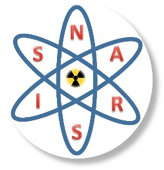NARSIS Project

![]()
About NARSIS Project
The NARSIS Project Horizon 2020 (H2020) research project is a collaboration of 18 EU research institutions.
NARSIS aims at improving the nuclear safety assessment methodologies for generations II & III reactors, based on innovative research and tools.
Visit the NARSIS Project website to learn more details or download the NARSIS Project leaflet.

Project objective:
Probabilistic Safety Assessment (PSA) procedures allow to better understand and estimate the likelihood of the most causes prone to initiate nuclear accidents and to identify the most critical elements of the systems.
However, despite
- Natural hazards characterization, considering concomitant external (simultaneous-yet-independent or cascading) events, and the correlation in intra-event intensity parameters;
- Fragility and functionality assessment of main critical NPPs’ elements, accounting for conjunct effects (including ageing effects) and interdependencies under single or multiple external aggressions;
- Risk integration combined with uncertainty characterization and quantification, to allow efficient risks comparison and account for all possible interactions and cascade effects;
- Better processing/integration of expert-based information within PSA, through modern uncertainty theories both to represent in flexible manner experts’ judgments and to aggregate them to be used in a comprehensive manner.
The proposed improvements will be tested and validated on simplified and
real NPP case studies. Demonstration supporting tools for operational &
severe accident management will be also provided.
Project description:
Probabilistic Safety Assessment (PSA) of Natural External Hazards Including Earthquake was the subject of a workshop organized by OECD/NEA Committee on the Safety of Nuclear Installations in June 2013 where several areas of improvement have been identified. To follow the conclusions/recommendations of this workshop, the main objective of NARSIS is to bring sound contributions to the safety assessment methodologies by reviewing, analyzing and improving some aspects relative to:
- external hazard events, potentially including events arising from combination of hazards, frequency estimation of high intensity low probability events and re-evaluation of screening criteria,
- modelling of the structure response to external aggressions and introduction of new concept of fragility surfaces, correlation effects and consequent damage scenarios,
- theoretical development for constraining Expert Judgment, treatment of parameter, model and completeness uncertainties, development of methods based on Bayesian model and Human Reliability Analysis, and
- Level 2 PSA aspects of external hazards risk analysis including evaluation of accident management measures in case of external events.
The global concept of the proposed project NARSIS consists in providing
- theoretical improvement in scientific approach of natural hazards assessment and their impacts including advance in evaluation of uncertainties and reduction of subjectivity in expert judgments;
- validation of the findings in the frame of the safety assessment through adequate model reduction, simulations and experimentations and finally,
- application of the outcomes at the demonstration level by providing supporting tools for sever accident management.
To reach this goal, NARSIS will rely on a multidisciplinary approach. Indeed, the complexity of the nuclear environment makes safety assessment increasingly difficult by extending the scope of investigations. The appropriate method for building the most likely successful project in this area is that which effectively integrates knowledge from various scientific disciplines and practitioners’ experiences. NARSIS project mirrors this fact through the composition of its consortium that encompasses leading universities, research institutes, TSOs, nuclear power producers and suppliers, reactor designers and operators. The work is characterized by efficient involvement of high-level experts from several disciplines, such as geology and other earth sciences, physics, mathematics, civil and structural engineering, modeling and computing having a common understanding of the concept of safety.
The improvement in
Based on theoretical developments, the NARSIS project aims at making significant leap forward in scientific approach to reactor safety by proposing updates of some elements required for the safety assessment. These advances would concern three main domains:
Objective 1: Improvement on
Objective 2: Improvement of vulnerability assessment of the elements subjected to complex aggressions and introduction of vector-based fragility surfaces (instead of fragility curves).
Objective 3: Improvement on the treatment of uncertainties including uncertainties related to the integration of the expert judgment in the PSA.
